
The Combat Infantryman Badge (CIB) is a United States Army military decoration. The badge is awarded to infantrymen and Special Forces soldiers in the rank of colonel and below, who fought in active ground combat while assigned as members of either an Infantry or Special Forces unit of brigade size or smaller at any time after 6 December 1941. For those soldiers who are not members of an infantry, or Special Forces unit, the Combat Action Badge (CAB) is awarded instead. For soldiers with an MOS in the medical field they would, with the exception of a Special Forces Medical Sergeant (18D), receive the Combat Medical Badge. 18D Special Forces Medics would receive the Combat Infantryman badge instead.
Chief warrant officer is a senior warrant officer rank, used in many countries.
The Expert Infantryman Badge, or EIB, is a special skills badge of the United States Army.

The Combat Action Badge (CAB) is a United States military award given to soldiers of the U.S. Army of any rank and who are not members of an infantry or special forces MOS, for being "present and actively engaging or being engaged by the enemy, and performing satisfactorily in accordance with prescribed rules of engagement" at any point in time after 18 September 2001.

Lieutenant General Samuel Vaughan Wilson, aka "General Sam", completed his active military career in the fall of 1977, having divided his service almost equally between special operations and intelligence assignments.
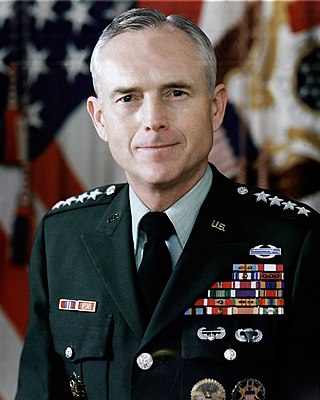
John Adams Wickham Jr. is a retired United States Army general who served as the United States Army Chief of Staff from 1983 to 1987.
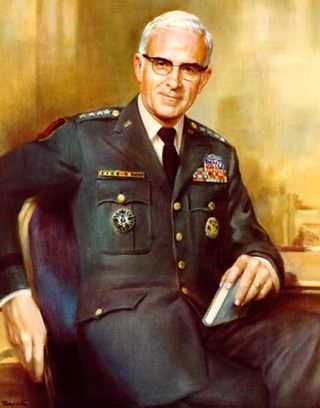
Bernard William Rogers was a United States Army general who served as the 28th Chief of Staff of the United States Army, and later as NATO's Supreme Allied Commander, Europe and Commander in Chief, United States European Command.
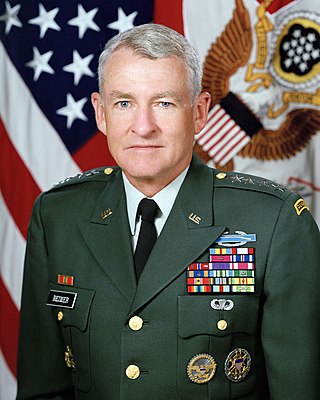
Dennis Joe Reimer is a retired general of the United States Army, who served as the 33rd Chief of Staff of the Army from June 20, 1995 to June 21, 1999. He is also a graduate of Ranger and Airborne school.

Arthur Edmon Brown Jr. is a retired four-star general of the United States Army who served as Vice Chief of Staff (VCSA) from 1987 to 1989.
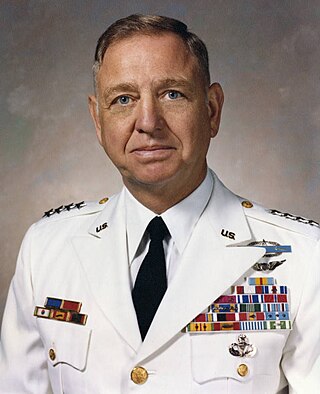
Sam Sims Walker was a United States Army general who served as the Commanding General of Allied Land Forces, South East Europe from 1977 to 1978.
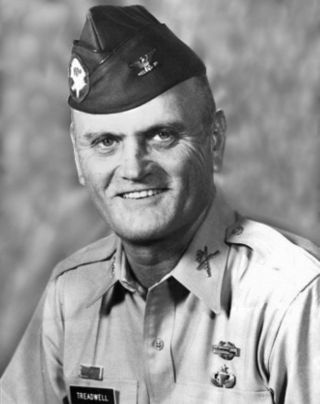
Jack LeMaster Treadwell was a United States Army colonel and a recipient of the United States military's highest decoration for valor—the Medal of Honor—for his actions in World War II. At the time of his retirement, Treadwell was believed to be the most decorated man in the United States Armed Forces.
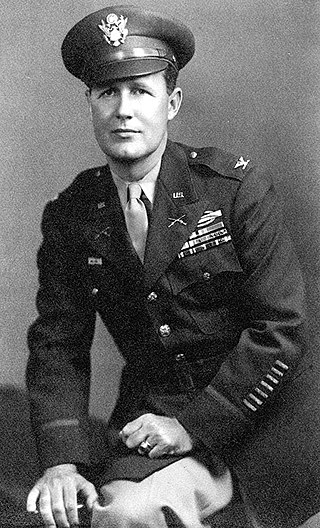
Brigadier General Donald Dunwody Blackburn was a United States Army Special Forces officer, best known for his significant command and developmental roles in the U.S. Army Special Forces.

Oliver Williams Dillard Sr. was a United States Army major general, the fifth black officer in the U.S. Army to attain flag rank. He was a member of the Military Intelligence Hall of Fame and Officer Candidate School Hall of Fame, at Fort Huachuca, Arizona and Fort Benning, Georgia respectively.
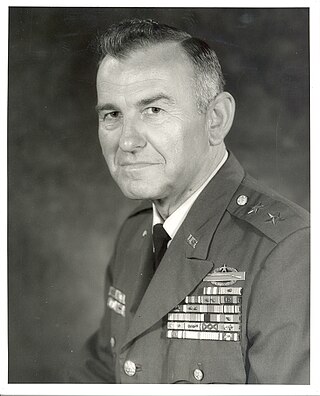
Robert Leahy Fair was a United States Army lieutenant general and a field commander in Germany during the Cold War. Fair commanded V Corps from August 25, 1975, until January 4, 1976. After 32 years in the U.S. Army and service in three wars, Fair concluded his career in 1976, and died in 1983.

Julian Johnson Ewell was a career United States Army officer who served in World War II, the Korean War and the Vietnam War. He commanded the 9th Infantry Division and II Field Force in Vietnam, and attained the rank of lieutenant general.
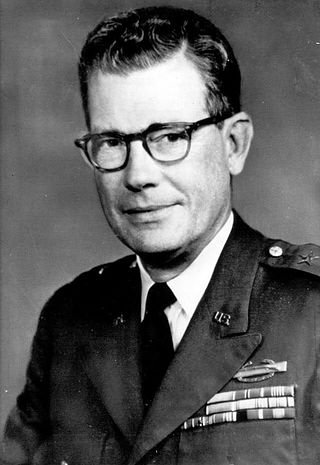
Major General James Leon Baldwin was a career United States Army officer who served as commander of the 23rd (Americal) Infantry Division from 1970 to 1971.

Roger C. Schultz is a retired United States Army lieutenant general who served as director of the Army National Guard.
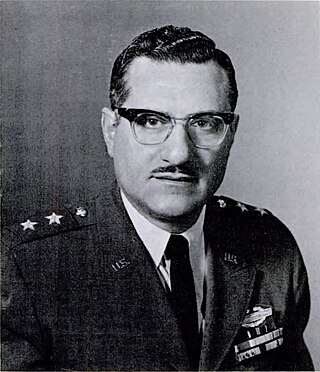
Major General Leonard Holland was an American military officer from Rhode Island. He served as the Adjutant General of Rhode Island for 22 years from 1961 to 1983, longer than anyone else.
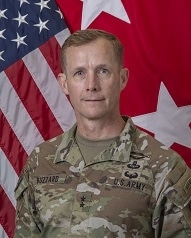
Curtis Alan Buzzard is a United States Army major general who serves as the commanding general of the United States Army Maneuver Center of Excellence and Fort Benning since July 14, 2022. Prior to that, he served as the deputy chief of staff for operations, plans and training of the United States Army Forces Command from January 2022 to June 2022, and as the 78th Commandant of Cadets of the United States Military Academy from June 2019 to May 2021.

Edward C. Peter II was a career officer in the United States Army. A veteran of the Korean War and Vietnam War, he attained the rank of lieutenant general and was most notable for his command of 2nd Battalion, 27th Infantry, the 1st Infantry Division Support Command, the Department of the Army Legislative Liaison Office, the 5th Infantry Division and Fort Polk, and Fourth United States Army. Peter received the Combat Infantryman Badge twice, and his awards and decorations included the Army Distinguished Service Medal (2), Silver Star (2), Legion of Merit (2), Bronze Star Medal (2), Meritorious Service Medal, Air Medal (6), and Army Commendation Medal.























